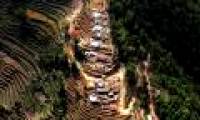
The worst earthquake in Nepal's history since 1934 has caused the Earth to deviate greatly.
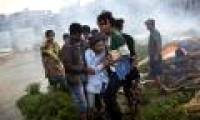
Nearly 2,500 people were killed after a massive earthquake in Nepal and the number could still increase, while search and rescue work are facing difficulties due to bad weather.
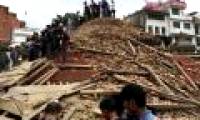
Near noon on April 25, large tectonic plates below the Earth's surface moved and created an impact equivalent to 20 atomic bombs, ripping the ground in Katmandu, Nepal.

According to scientists, the new continent will be formed as a result of the shift between Asia and America.
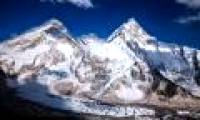
Although no accurate data has been obtained after the disaster at the end of last week, geologists have predicted that the highest peak in the world as well as the entire Himalayas

Nepalese police found the bodies of 50 people, including foreigners, in an area of snowfall, while the number of people killed because of the earthquake increased to 7,040.

Scientists warn that earthquakes and aftershocks in Nepal could lead to thousands of landslides, melting glacial lakes, leading to flooding in the near future.

Safe infrastructure and disaster response capacity are valuable lessons that Nepal and other countries need to withdraw after the disaster in South Asia.

Police and Nepalese volunteers found the body of about 100 pedestrians and villagers buried in an earthquake avalanche last month, and are digging in snow and ice to find traces of

With no hope of finding survivors, the Nepalese government decided to stop the search to turn to reconstruction work, helping survivors overcome the current difficulties and
 The worst earthquake in Nepal's history since 1934 has caused the Earth to deviate greatly.
The worst earthquake in Nepal's history since 1934 has caused the Earth to deviate greatly. Nearly 2,500 people were killed after a massive earthquake in Nepal and the number could still increase, while search and rescue work are facing difficulties due to bad weather.
Nearly 2,500 people were killed after a massive earthquake in Nepal and the number could still increase, while search and rescue work are facing difficulties due to bad weather. Near noon on April 25, large tectonic plates below the Earth's surface moved and created an impact equivalent to 20 atomic bombs, ripping the ground in Katmandu, Nepal.
Near noon on April 25, large tectonic plates below the Earth's surface moved and created an impact equivalent to 20 atomic bombs, ripping the ground in Katmandu, Nepal. According to scientists, the new continent will be formed as a result of the shift between Asia and America.
According to scientists, the new continent will be formed as a result of the shift between Asia and America. Although no accurate data has been obtained after the disaster at the end of last week, geologists have predicted that the highest peak in the world as well as the entire Himalayas
Although no accurate data has been obtained after the disaster at the end of last week, geologists have predicted that the highest peak in the world as well as the entire Himalayas Nepalese police found the bodies of 50 people, including foreigners, in an area of snowfall, while the number of people killed because of the earthquake increased to 7,040.
Nepalese police found the bodies of 50 people, including foreigners, in an area of snowfall, while the number of people killed because of the earthquake increased to 7,040. Scientists warn that earthquakes and aftershocks in Nepal could lead to thousands of landslides, melting glacial lakes, leading to flooding in the near future.
Scientists warn that earthquakes and aftershocks in Nepal could lead to thousands of landslides, melting glacial lakes, leading to flooding in the near future. Safe infrastructure and disaster response capacity are valuable lessons that Nepal and other countries need to withdraw after the disaster in South Asia.
Safe infrastructure and disaster response capacity are valuable lessons that Nepal and other countries need to withdraw after the disaster in South Asia. Police and Nepalese volunteers found the body of about 100 pedestrians and villagers buried in an earthquake avalanche last month, and are digging in snow and ice to find traces of
Police and Nepalese volunteers found the body of about 100 pedestrians and villagers buried in an earthquake avalanche last month, and are digging in snow and ice to find traces of With no hope of finding survivors, the Nepalese government decided to stop the search to turn to reconstruction work, helping survivors overcome the current difficulties and
With no hope of finding survivors, the Nepalese government decided to stop the search to turn to reconstruction work, helping survivors overcome the current difficulties and

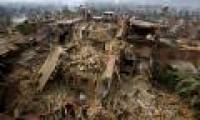
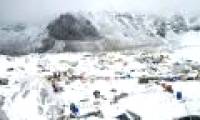
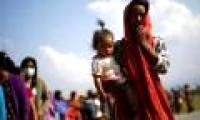
 NASA's 'Ninth Planet' Shows Signs of Being Friendly to Life
NASA's 'Ninth Planet' Shows Signs of Being Friendly to Life Why did American astronauts have to be quarantined when returning to Earth?
Why did American astronauts have to be quarantined when returning to Earth? China surprises the world by building a cable-stayed bridge 'above the clouds'
China surprises the world by building a cable-stayed bridge 'above the clouds' Why do women sleep less and wake up more than men?
Why do women sleep less and wake up more than men? Revealing the secret inside the stuffed animal claw machine, from there, summarizing experience to help you increase your winning rate many times over
Revealing the secret inside the stuffed animal claw machine, from there, summarizing experience to help you increase your winning rate many times over What would happen if you dug a hole through the Earth and jumped in?
What would happen if you dug a hole through the Earth and jumped in? Camera takes a photo that lasts 1,000 years
Camera takes a photo that lasts 1,000 years Was there nuclear war in ancient times?
Was there nuclear war in ancient times?